
BEST Recipes for Baby Led Weaning: Weaning is an essential phase for both the mother and the baby. On the one hand, you will not have to worry as much about breastfeeding, and on the other hand, your baby will get to experience new foods that will help them grow.
But to transit successfully from breastfeeding to solid food, you need to put together a secure weaning process and follow it entirely.
In this guide, we will discuss the best recipes you can start with during the weaning process.
We will also touch essential aspects to consider during this crucial phase of your baby's life!
Jump to:
Recipes for Baby Led Weaning
Once your baby reached the age of 6 months, you can start introducing other types of food in their daily menu. This doesn't mean that you will exclude the breastfeeding all at once. Rather than doing that, you will start adding some solid meals each day, until breastfeeding is no longer necessary.
This should be done gradually, so your baby has the time to adapt to the diet changes. Here are ten of the best and healthiest recipes you can give to your baby when you are going through the weaning process.
1. Apple Puree Recipe
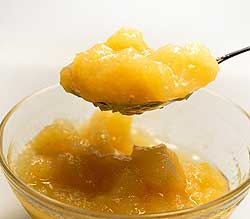
Ingredients:
- One apple.
- 75 ml of water.
Method:
- Peel the apple and chop it into little cubes. Put it in a container and add 75 ml of water.
- Boil the apple until it becomes mushy enough to mimic the consistency of a pure. As you are cooking the apple, you might need to add a bit more water to avoid having it stuck to the pan. But stick to a maximum of 100 ml of water because you don't want the final meal to be too watery.
- Let the apple puree cool down before you feed it to your baby.
This recipe will give you about four to 5 portions for a 6 months old baby. Freeze leftovers for further meals.
Nutritional Value:
- One apple contains 1 protein, 19 g of sugar, 3 g of fiber and 26 g of carbohydrates.
Preferred month to give this: Starting with 6 months.
![]()
2. Avocado and Banana Puree Recipe

Ingredients:
- One banana.
- One avocado.
Method:
- Peel the banana and avocado and place them in a blender or a mixing bowl. If you don't have such devices, you can use a fork to smash the two fruits. Blend or mash until you obtain a smooth cream.
You will obtain about five to six portions. Put leftovers in the fridge and try to feed them to your baby within 24 hours because avocado and banana get brown fast.
Nutritional Value:
- Avocado contains vitamins A, K, D, and E. It doesn't contain any sugar, sodium, or cholesterol. This is the only fruit that has monounsaturated fats which are suitable for the heart.
- Bananas contain one g of protein per serving, 30 g of carbohydrates, Potassium, vitamin A, D, and no sodium, cholesterol, or fat. Bananas also contain around 12 g of sugar per serving and 2 g of fiber.
Preferred month to give this: Starting with 6 months
![]()
3. Vegetables Mash Recipe
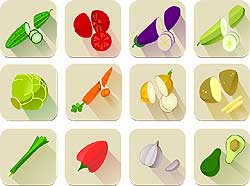
Ingredients:
- One medium sweet potato.
- One medium carrot.
- Water.
Method:
- Chop the carrot and put it to boil for five minutes in a pan.
- After the carrot is boiling, add the chopped sweet potato. Put a lid on the pan and let it simmer for up to 15 minutes.
- Once both veggies are boiled, blend them until you obtain a smooth cream. You can use a fork to smash them, as well.
- Let the mixture cool down before you feed it to your baby.
This baby-led weaning recipe will give you around six portions. You can freeze the leftovers for future servings.
Nutritional Value:
- Around 100 g of sweet potato brings approximately 20 g of carbs, 2 g of protein, 0.3 g of fat, over 3 g of fiber, as well as vitamin A, C, B6, Manganese, Potassium, and other minerals.
- The carrot is also significant. A medium-size carrot brings 0.9 g of protein, 9.6 g of carbs, 4.7 g of sugar, 2.8 g of fiber, and even 88% water.
Preferred month to give this: Starting with 6 months
![]()
4. Lentil Soup Recipe
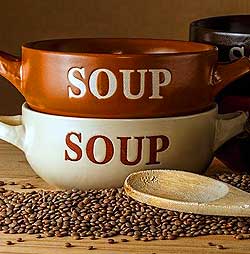
Ingredients:
- 160 g squash.
- A quarter of red pepper without seeds.
- One small onion.
- A teaspoon of vegetable oil.
- A teaspoon of dried herbs.
- Around 250 ml of water.
- 30 g of red lentils.
Method:
- Get the seeds off the squash and red pepper.
- Cut the squash, red pepper, and onion in small pieces.
- Add the oil in a pan and heat it up for a few minutes before you add the chopped vegetables. Let them cook for up to 5 minutes and add the herbs.
- Add lentils and water until it covers the veggies and bring it to boil for up to 20 minutes.
- Cook until the veggies and lentils are soft and adjust the water volume as needed.
- Let the soup cool down and blend until you obtain a creamy consistency.
This recipe will give you around four portions of soup for your baby.
Nutritional Value:
Vegetables have a lot of nutritional value, and this is one of the healthiest soups you can make.
- 100 g of lentils contains 9 g of protein, 20 g of carbs and folate, iron, phosphorus, as well as vitamin B6 and manganese.
- Red peppers also bring your baby about 4 g of sugar, 1 g protein, and 2 g of fiber per 100 g.
- Squash will add essential vitamins A, C, and B6 as well as riboflavin.
Preferred month to give this: Starting between 7 and 9 months.
![]()
5. Beef with Rice in a Delicious Curry Flavor Recipe

Ingredients:
- A quarter of a medium onion.
- A quarter of a small tomato.
- 160 g of diced beef.
- One teaspoon of vegetable oil.
- One tablespoon of tomato juice.
- Half a teaspoon of turmeric.
- Half a teaspoon of curry powder.
- 40 g of spinach.
- 100 ml of water.
- 15 g rice one tablespoon of pees.
Method:
- Cut the onion and tomato in small cubes.
- Add oil in a pan and the beef meat once it is heated up.
- Cook the beef until it becomes brown and adds the tomato and onion.
- Let it all cook for five minutes before you add the tomato juice, curry, turmeric, and water.
- Let the soup boil for up to 15 minutes. Add the chopped spinach and pees and give it another five to ten minutes to cook together.
- Use a different pan for cooking the rice how you would typically cook it or, you can use your rice cooker if you have one.
- When everything is cooked, add the rice to your curry soup and mix well until it becomes a homogeneous composition.
Nutritional Value:
This soup is highly nutritious for your baby.
- 100 g of rice has over 4 g of protein, 0.6 g of fiber, 53 g of carbs, and 0.4 g of fat.
- The spinach is an excellent source of magnesium (24 mg per cup), it has 167 mg of potassium, 0.81 g of iron as well as other nutrients.
- But the resistant ingredient of this recipe is the beef. Beef contains 26.1 g of protein per 100 g as well as 11.8 g of fat.
Preferred month to give this: Starting between 7 and 9 months.
![]()
6. Chicken Strips Recipe
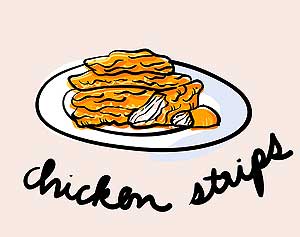
Ingredients:
- Half a chicken breast.
- Half a lemon.
Method:
This is another simple but very nutritious recipe for your little one.
- Make sure that your oven is preheated up to 200 degrees C.
- Wash the chicken breast and cut it in small strips. The size should be right to fit your baby's hand.
- Put all the chicken strips in a tray and squeeze lemon juice on top of them.
- Allow the strips up to 15 minutes to get cooked in the oven.
- Let them cool down and give one at a time to your baby.
Nutritional Value:
- 100 g of chicken has not less than 53 g of protein and over 6 g of fat.
- The lemon is also a great source of vitamin C, and it is delicious combined with the chicken.
Preferred month to give this: Between 7 and 9 months.
![]()
7. Scrambled Eggs Recipe
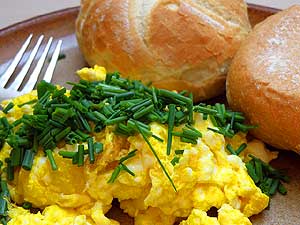
Ingredients:
- One or two medium eggs.
- Two tablespoons of vegetal milk or cow milk.
- Two sliced mushrooms.
- One tablespoon of vegetable oil.
Method:
- Add the broken eggs and milk into a bowl. Mix it with a fork until it becomes homogeneous.
- Give the oil time to heat up in a pan and add the sliced mushrooms.
- When the mushrooms become mushy, add the egg and milk mixture.
- Scramble the eggs, milk, and mushrooms in the pan for up to two minutes.
- Remove from the stove and give it a few minutes to cool down.
This should give you a significant portion or maximum of two medium portions for a nine months old baby.
Nutritional Value:
- One egg contains up to 13 g of protein but also Vitamin A, D, and Calcium. These values, combined with the high in potassium mushrooms and milk, which also has calcium make for a delicious meal.
Preferred month to give this: Around 9 months to 12 months.
![]()
8. Cream Soup Recipe
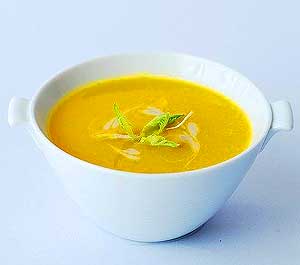
Ingredients:
- One carrot.
- A quarter of celery root.
- One small tomato.
- Dried herbs by taste.
Method:
- Boil the vegetables together until they get soft. You can chop them to have them cook faster.
- Add the dried herbs when they are boiled and put the soup in the blender.
- Blend until you obtain a runny cream consistency.
- Let it cool down and feed it to your baby.
You should get around 5 to 6 portions of these ingredients. Place the leftovers in the fridge.
Nutritional Value:
All these veggies will bring your child a lot of vitamins and nutrients.
- The celery root brings a lot of vitamins K, C, and B, and the carrot is rich in fiber, natural sugar as well as vitamin A. C and K.
- And let's not forget the tomato, which is an excellent source of lycopene, folic acid, lutein, and beta-carotene.
Preferred month to give this: Between 9 and 12 months.
![]()
9. Banana and Mango Paste Recipe
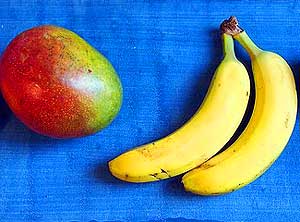
Ingredients:
- One banana.
- Half a big mango.
- 50 ml of cow milk or vegetal milk.
Method:
- Chop the banana and mango, and put the pieces in your blender.
- Add the milk and blend until you obtain a smoothie. You might need to adjust the milk quantity as you are mixing it, to make this thinner.
Nutritional Value:
The values of bananas were discussed previously, but we have to mention the benefits your baby gets from mango.
- Mango has the complete quantity of vitamin C your baby needs in a day. It also has 35 % of vitamin A needed, 20% of folate, and 10% of B6.
Preferred month to give this: After six months but it is an excellent snack between 7 to 9 months. This is more of a desert, and it doesn't replace a meal.
Suggested Reading:
![]()
10. Pumpkin, Avocado and Carrot Puree Recipe
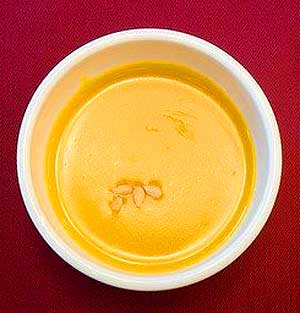
Ingredients:
- One avocado.
- One carrot.
- 50 g of pumpkin.
Method:
- You can alter the quantity of the ingredients how you want according to your child's preferences as well. But this is a great minimum to start with.
- Boil the carrot and the pumpkin until it gets to a mushy state.
- Drain the water and add let them cool down.
- Add the avocado and blend it in until you get a homogeneous consistency.
Nutritional Value:
- The super nutrients of avocado and carrot combined with pumpkin give your baby a delicious lunch or even dinner.
- Pumpkin contains a high concentration of vitamin A, E, C and Zinc, Potassium as well as Magnesium.
Preferred month to give this: Between 10 months and 12 months.
![]()
What is Weaning?
Weaning is one of the most critical processes in your baby's development. During this phase, you will replace some of the breastfeeding meals with solid food. Gradually, you will get to a point to which your baby is fed with solid food and no breast milk at all.
But this can take several months, and you need to be patient and creative during this time.
Weaning starts the moment you introduce other food than breast milk to your baby, and it ends with the lat breastmilk meal they have. Pediatricians recommend mothers to begin this transition around six months.
Some complete the weaning process by 12 months, while others might even take up to 24 months of age. The way your baby responds to this transition is also meaningful. Some babies will not like solid food right away, which can slow down the weaning transition.
![]()
How To Transit From Exclusive Breastfeeding To Weaning?
Here are some essential tips that will help you get from exclusive breastfeeding to a solid food diet for your little one.
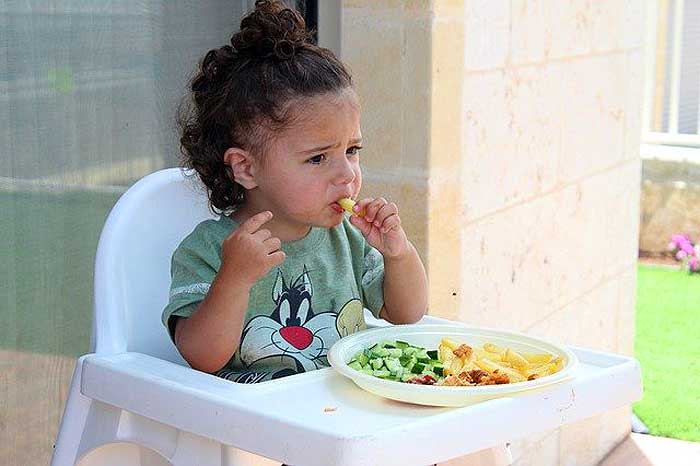
- Start with a few snacks. Many mothers make the mistake of replacing one breastfeeding meal with solid food without any preparation. This can give you firm refuse from your baby. Instead of doing that, try to give your baby a few snacks such as a taste of a banana, some apple to snack on, or maybe a boiled carrot to munch on. Once they are used to other flavors of food, they will be more likely to accept other meals.
- Keep breastfeeding your baby on demand. Even if you introduce some solid meals successfully, breastfeeding is still essential. Your baby will ask for it several times a day, and you should give him breastmilk regularly, even if you reduce the frequency of these meals.
- Cook recipes appropriate for your baby's age. A six months old infant will have different needs and preferences than 12 months old one. At this stage, they grow very fast, and their body keeps developing. They start to learn how to digest certain foods. Start with simple recipes that involve one or two ingredients when your baby is six months old and increase the complexity as they are pushing one year of age.
![]()
Things To Avoid During Weaning
Weaning also has its traps that you should be aware of to prevent them. Not all foods are recommended so early in a baby's life. Some might create allergic reactions, or they might not be well received by their bodies. Here are the main things you should avoid during the weaning process!
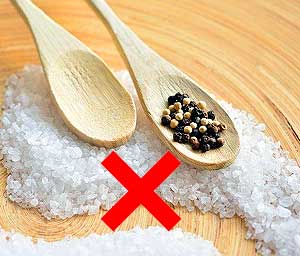
- Seasonings such as salt and pepper should be postponed until your baby is out of the breastfeeding phase entirely. Added salt can hurt the kidneys of your baby.
- Sugar is not necessary unless it comes in a natural form. The only sugar you baby needs is the one found in fruits and veggies. You don't have to give them raw sugar or any type of sweets until they are two years old. And even then, you should think twice.
- Different types of nuts. Nuts can present allergic risks to small infants. Whole nuts should be avoided until your baby is four or five years old because they come with choking hazards.
- Berries and citrus fruits. These fruits are also high in allergens, and your baby might not be able to process them properly when they are younger than two years old. however, each baby reacts different to citrus fruits, and not all of them have reactions to them. But it is better to avoid them and stay on the safe side.
![]()
As crucial as the weaning process is, you don't have to stress over it. When you have the right information and maintain a tight connection to your pediatrician, you can't fail.
Eventually, your baby will get to eat everything you want them to, at the right time. So, don't force them to eat something they don't like and don't get frustrated if they don't respond as good as you expect them to.
Try out the recipes above, and you will be able to get creative starting from them.
This guide should help you have a smooth transition from breastfeeding to solid food meals!
![]()
Key References
- [1] - "Weaning your child from breastfeeding - Caring for Kids". Accessed November 12, 2019. Link.
- [2] - "Apple For Kids - 7 Health Benefits With 2 Bonus Smoothie Recipes". Accessed November 12, 2019. Link.
- [3] - "Avocado Nutrition and Baby Development". Accessed November 12, 2019. Link.
- [4] - "The Benefits of Breastfeeding for Both Mother and Baby". Accessed November 12, 2019. Link.
- [5] - "Exclusive breastfeeding and associated factors among mothers in Gozamin district, northwest Ethiopia: a community based cross-sectional study | International Breastfeeding Journal | Full Text". Accessed November 12, 2019. Link.


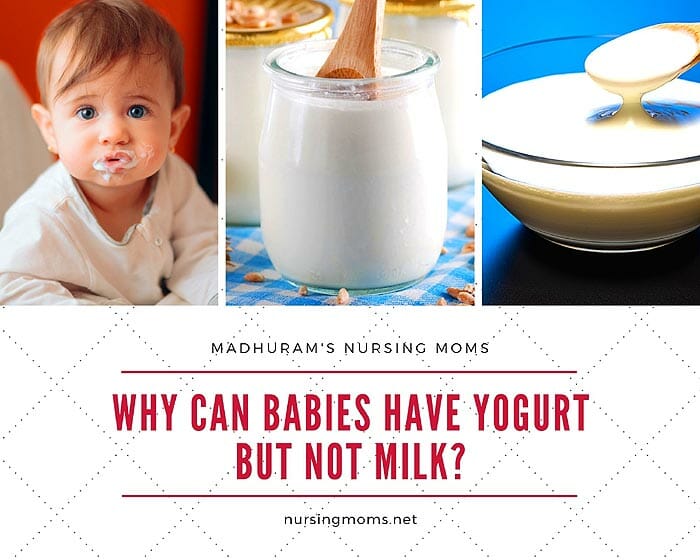

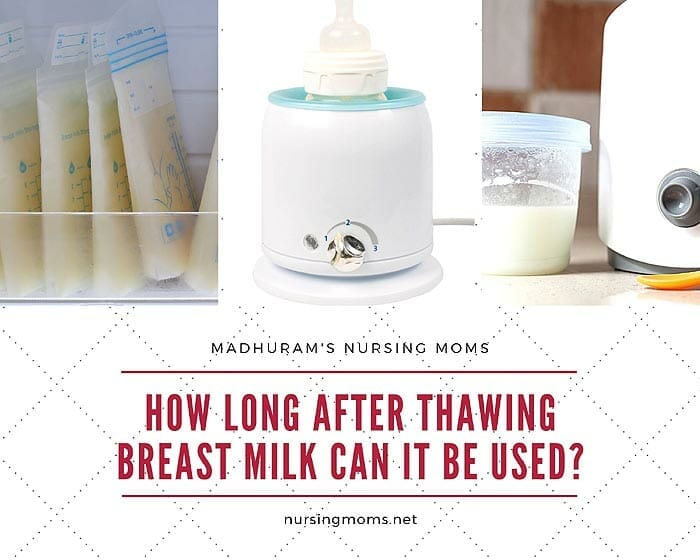


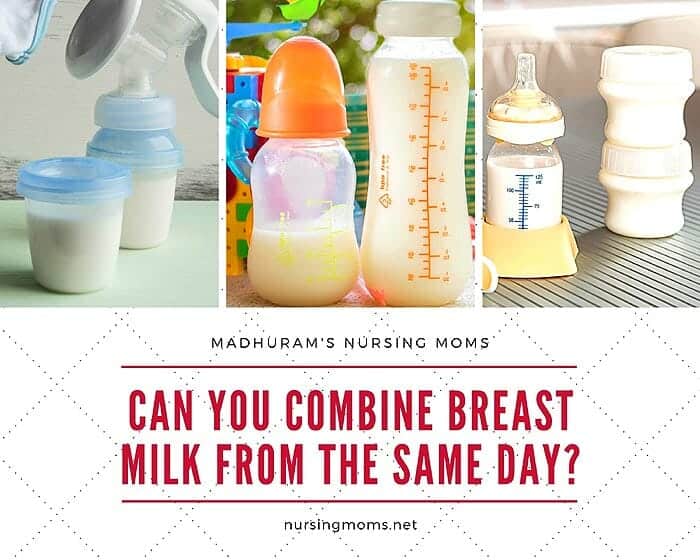
Leave a Reply